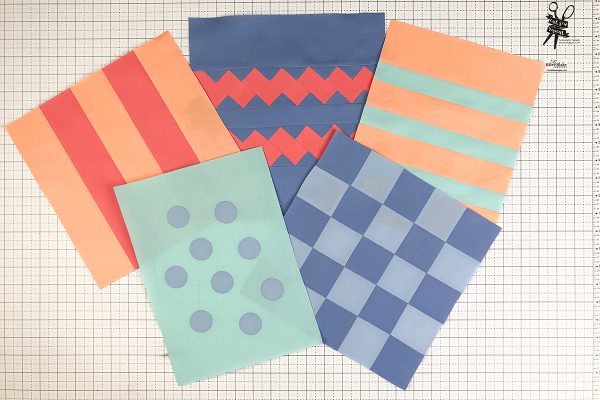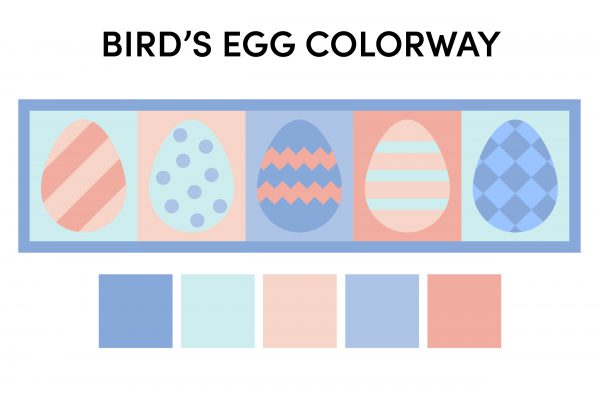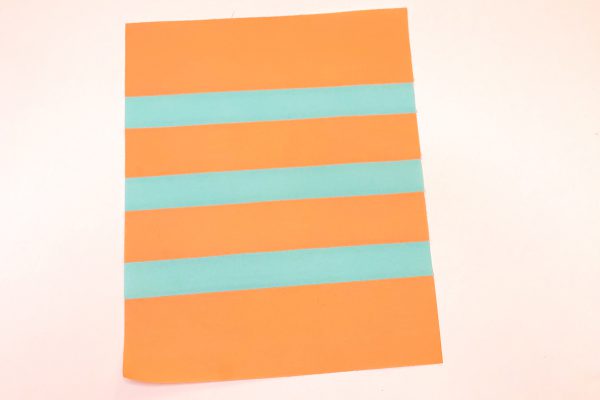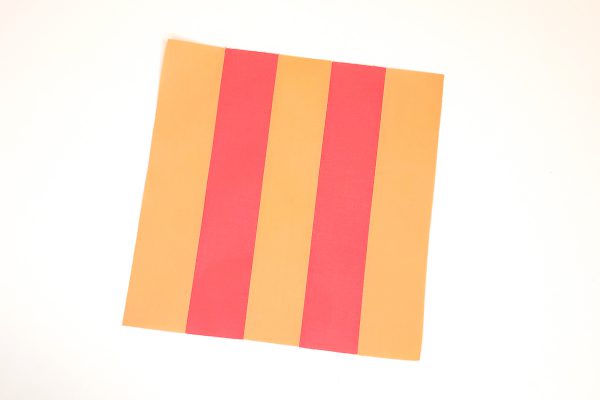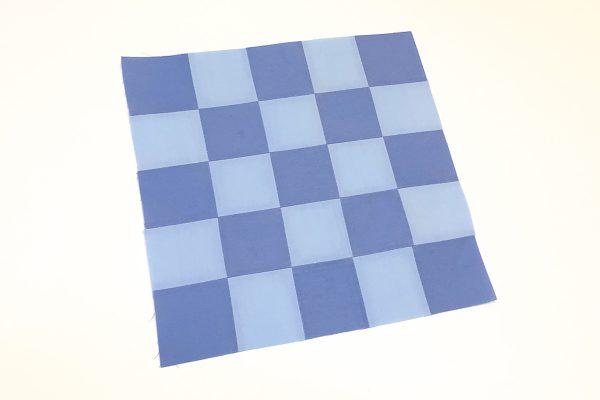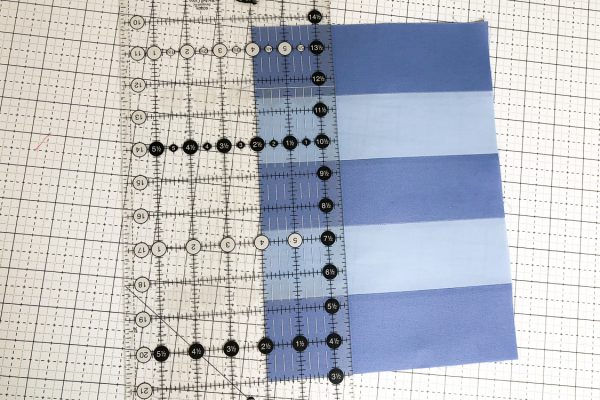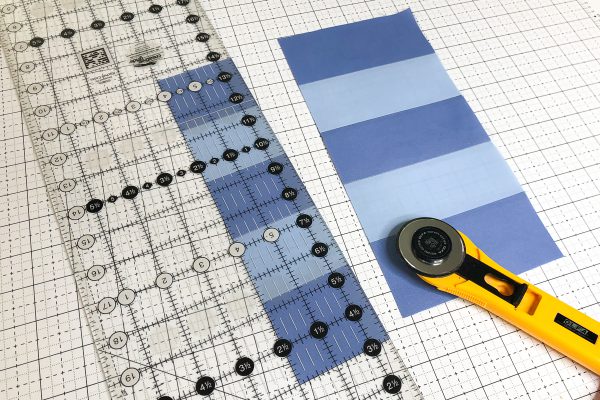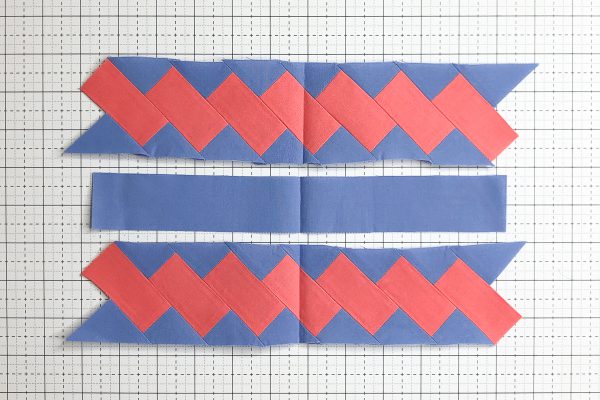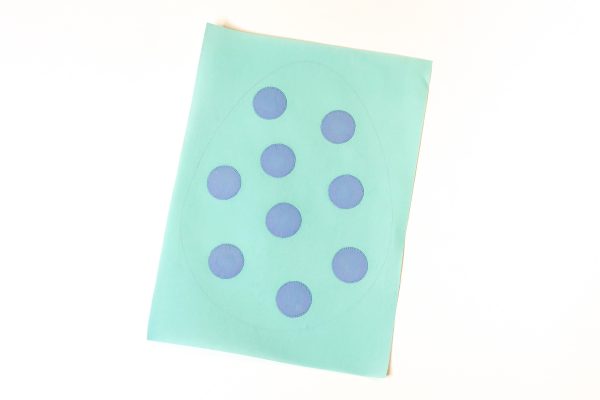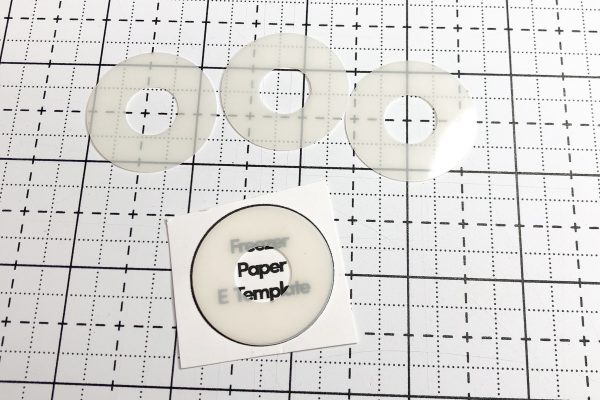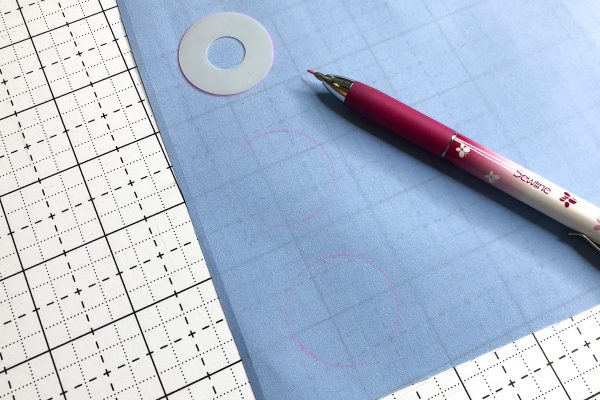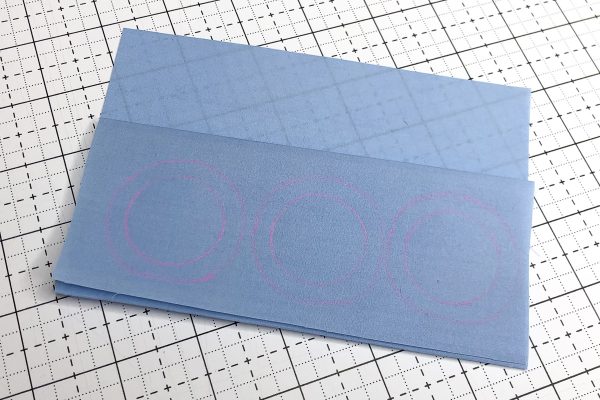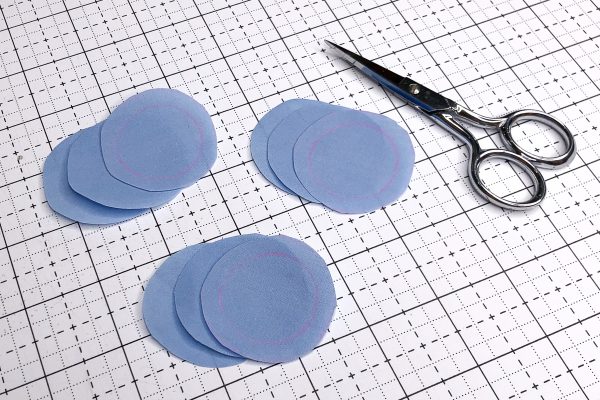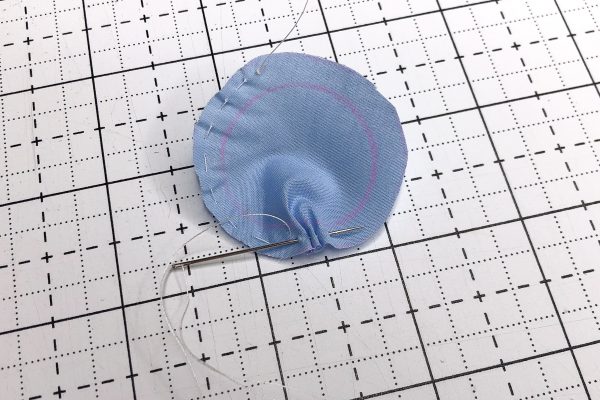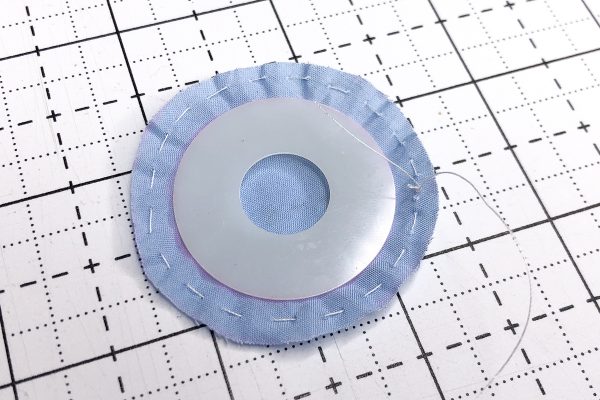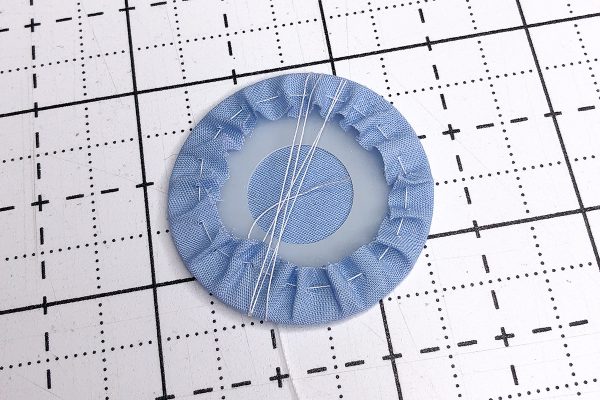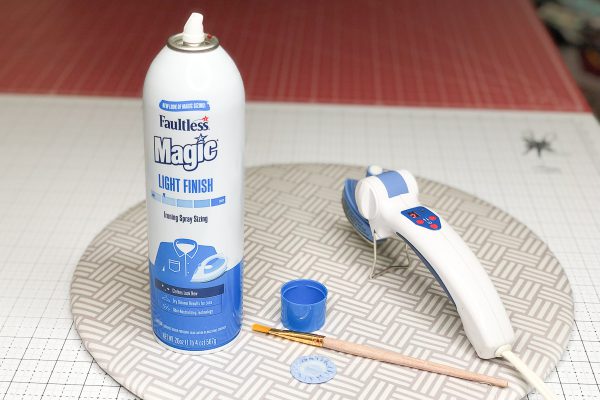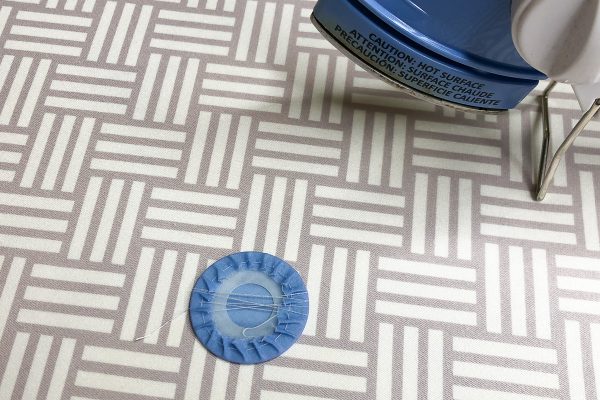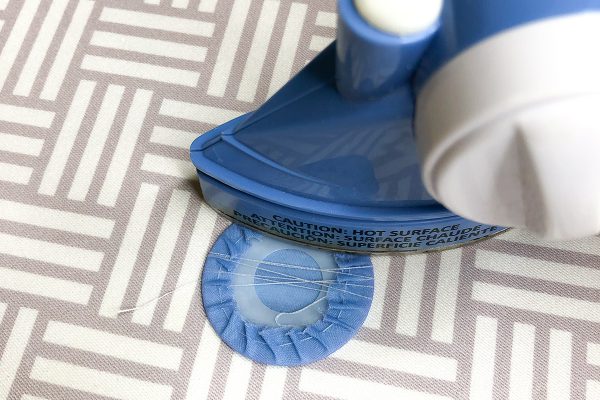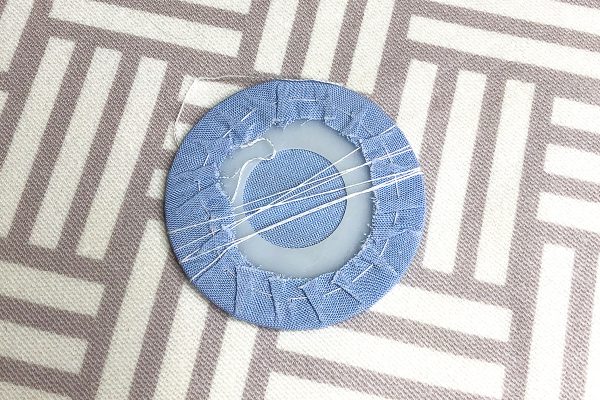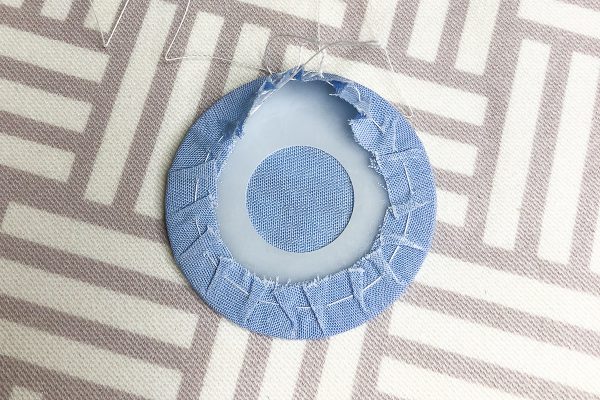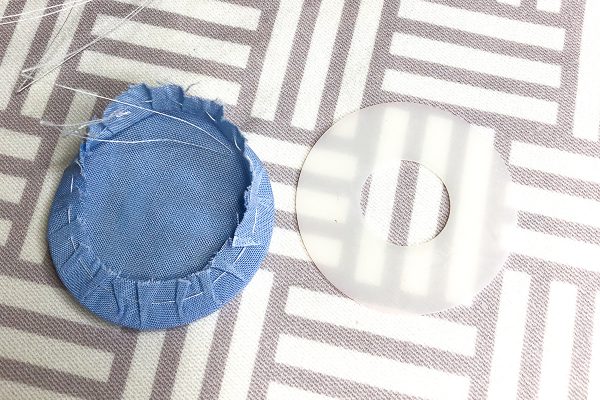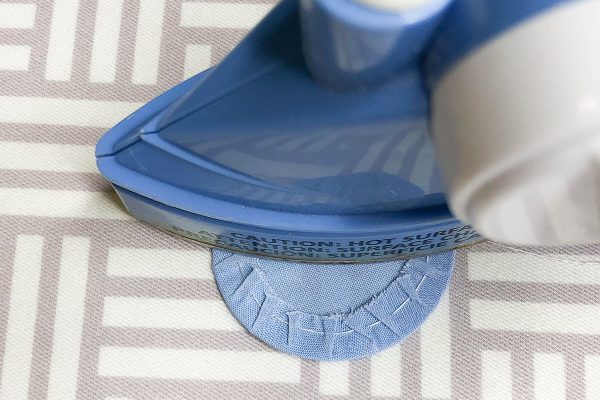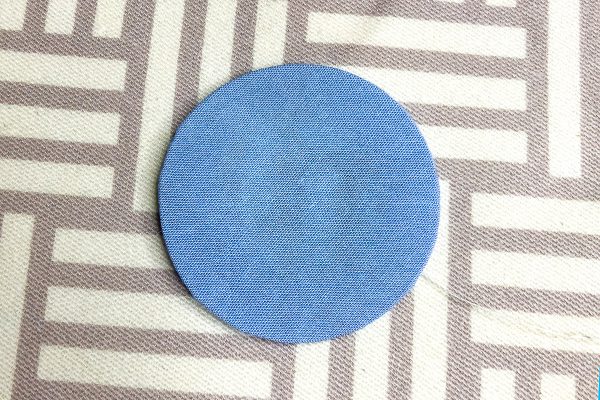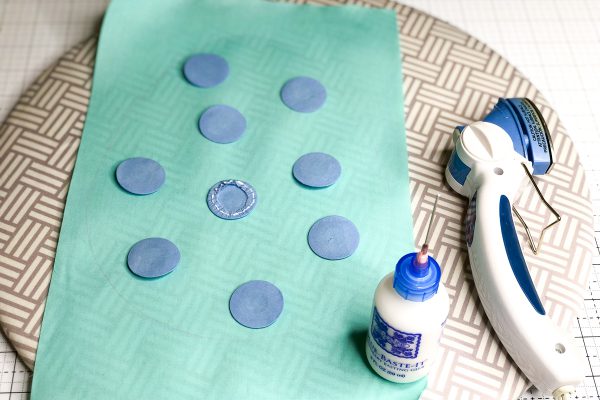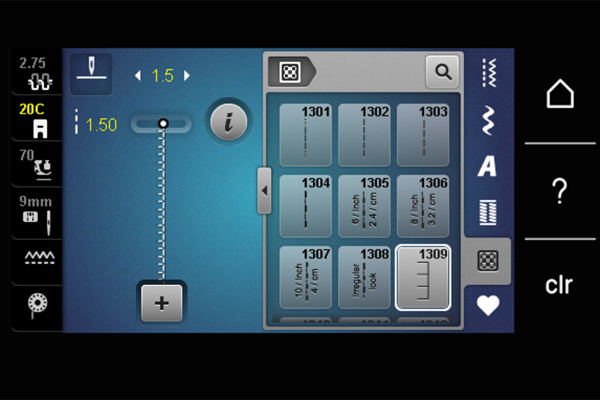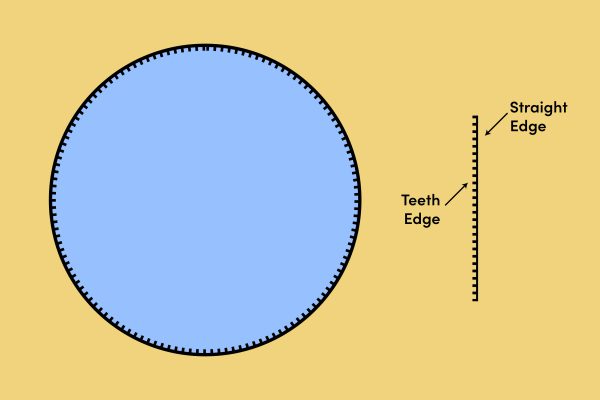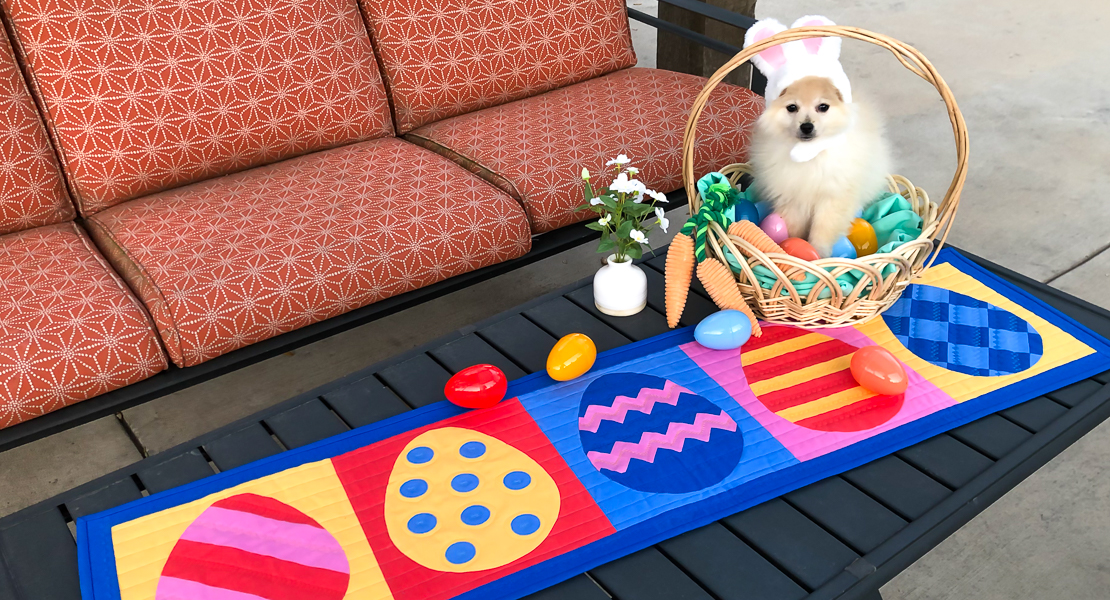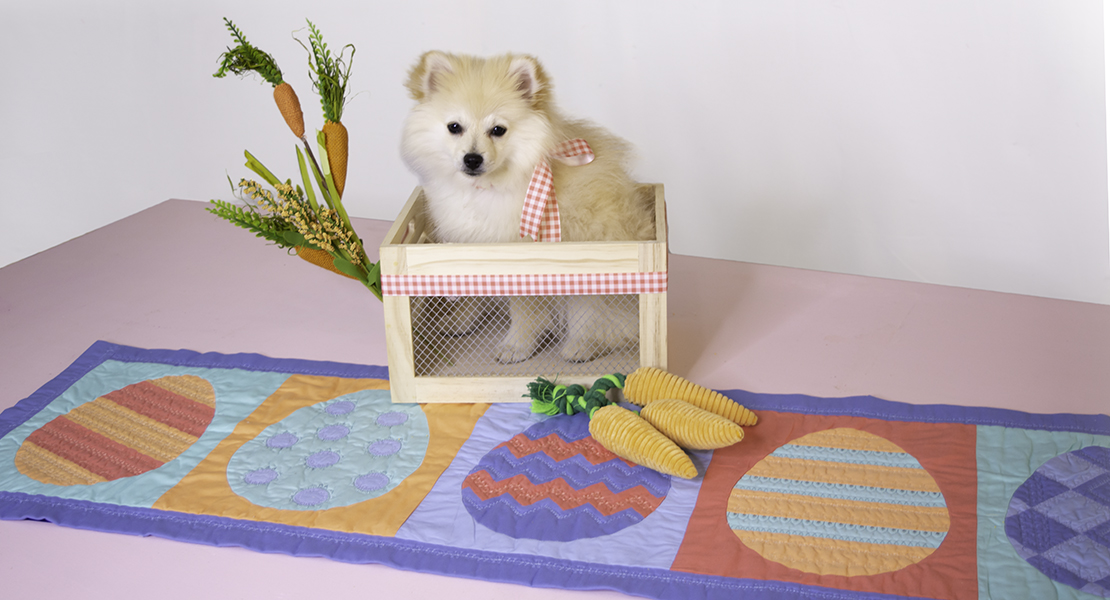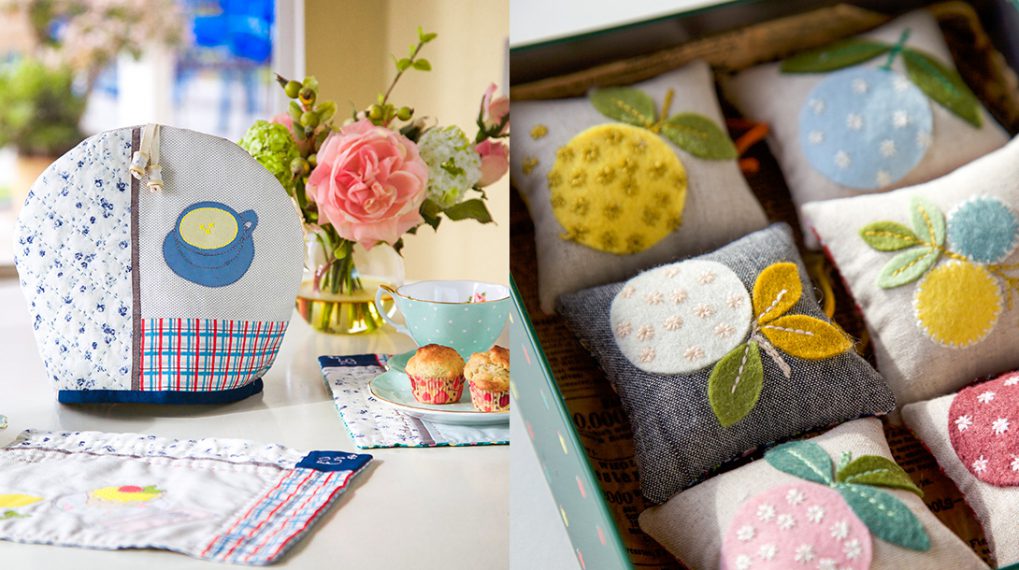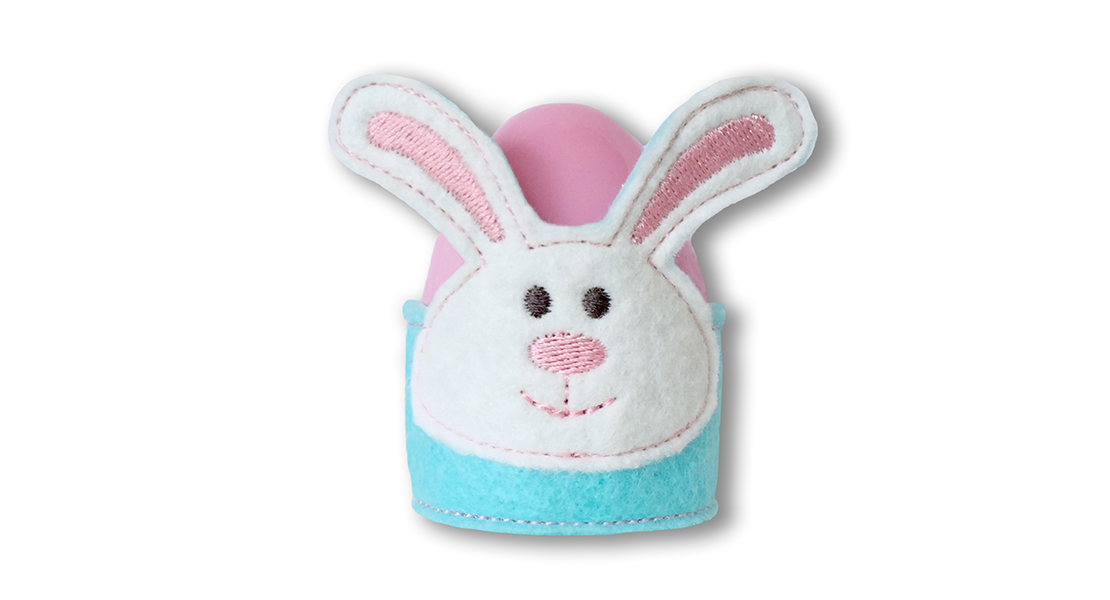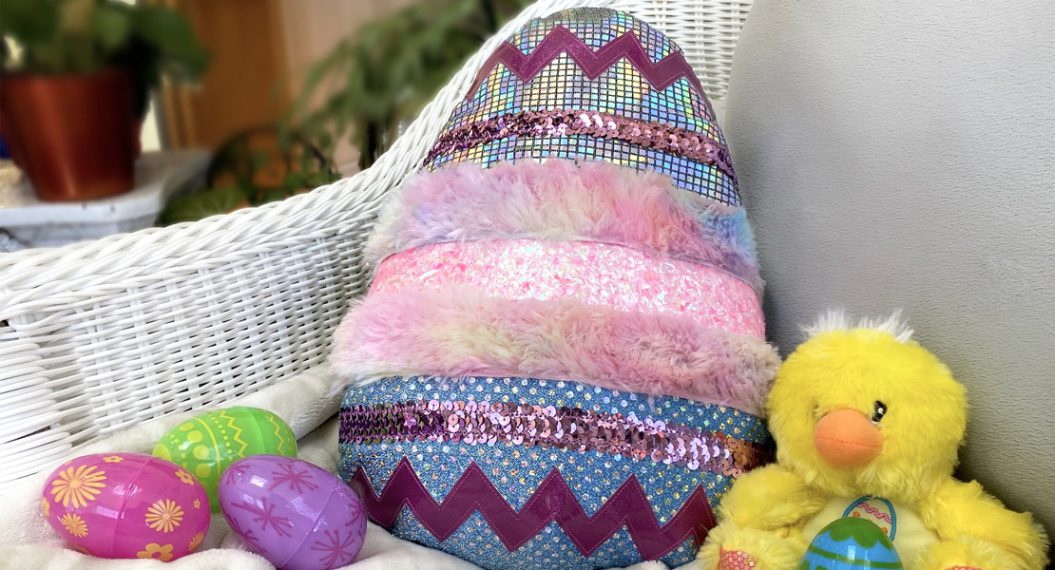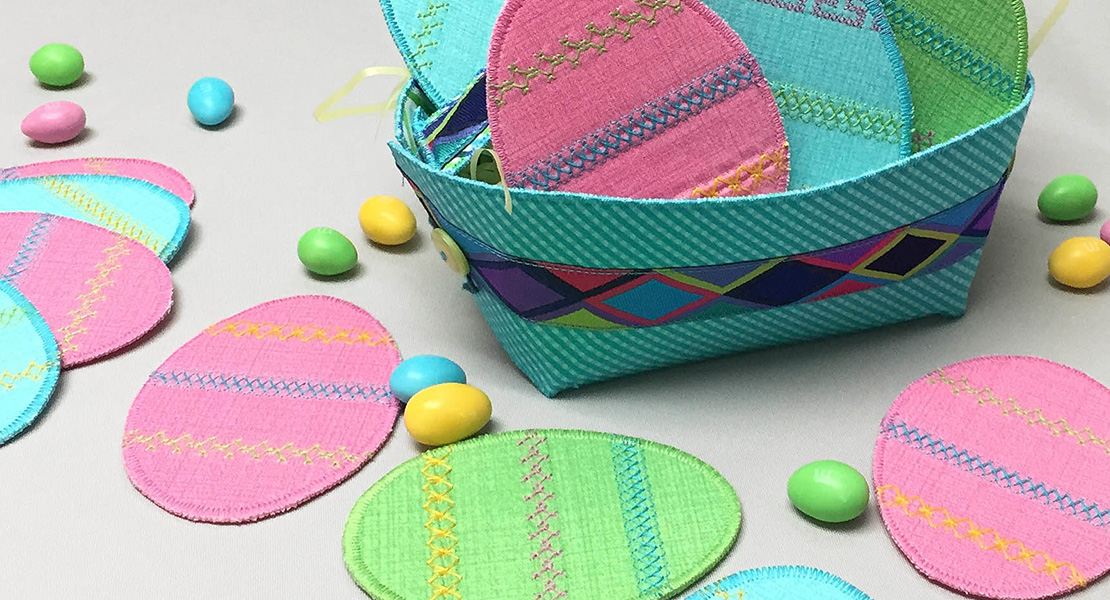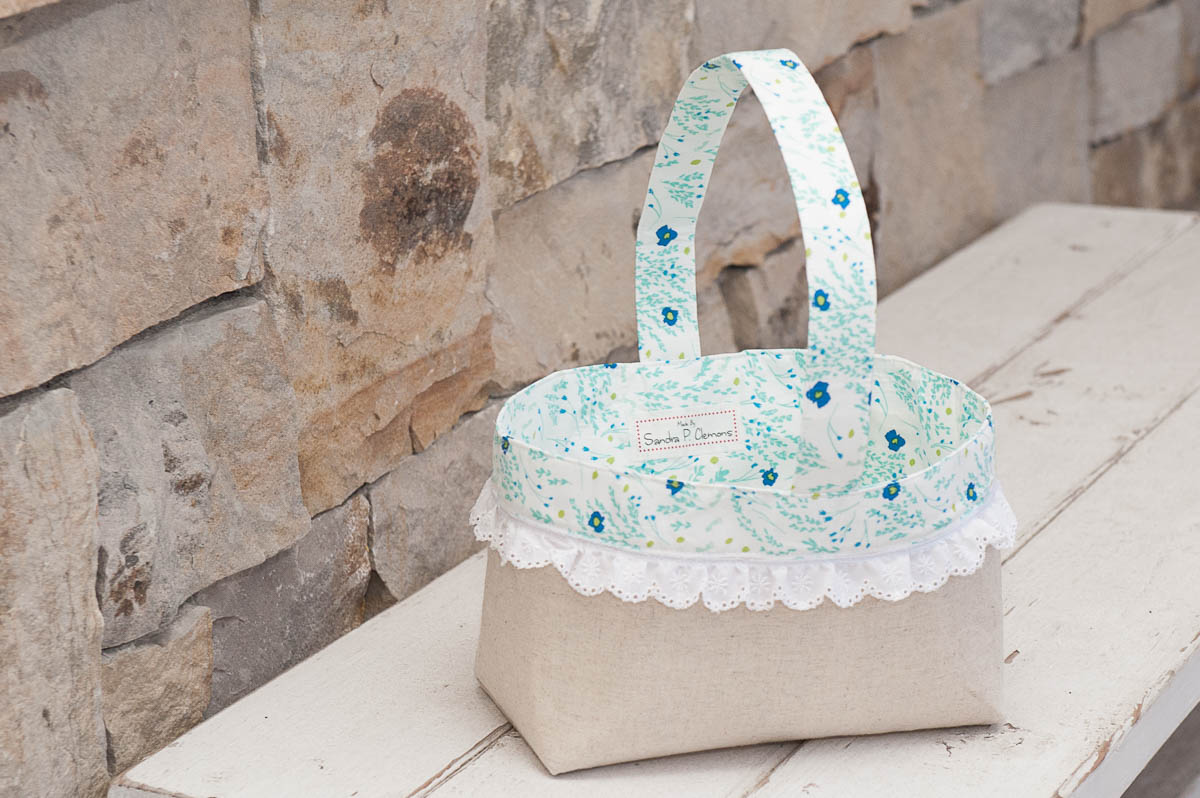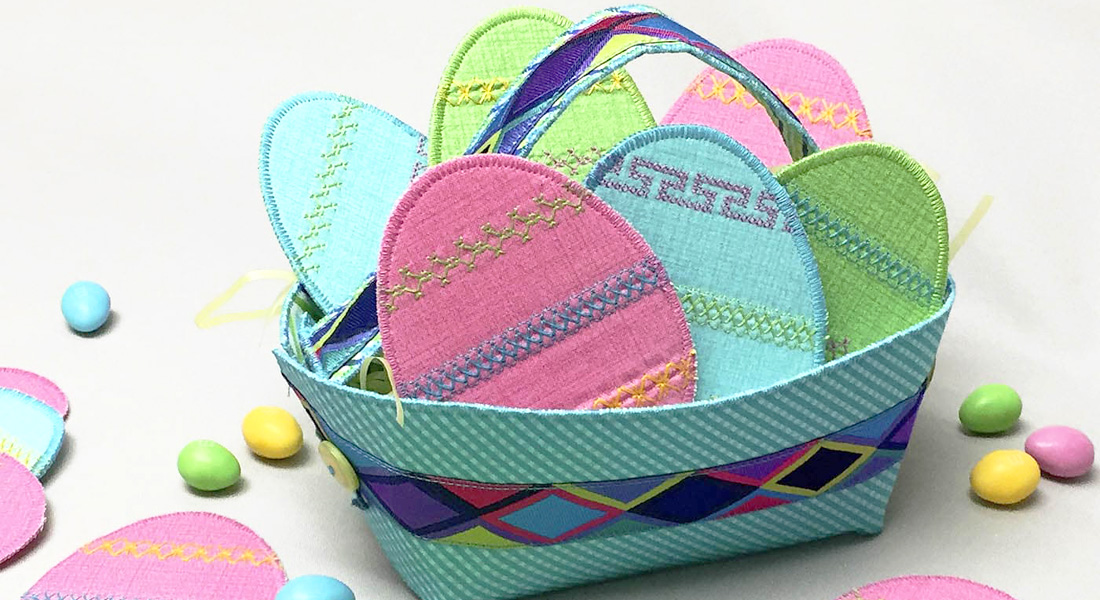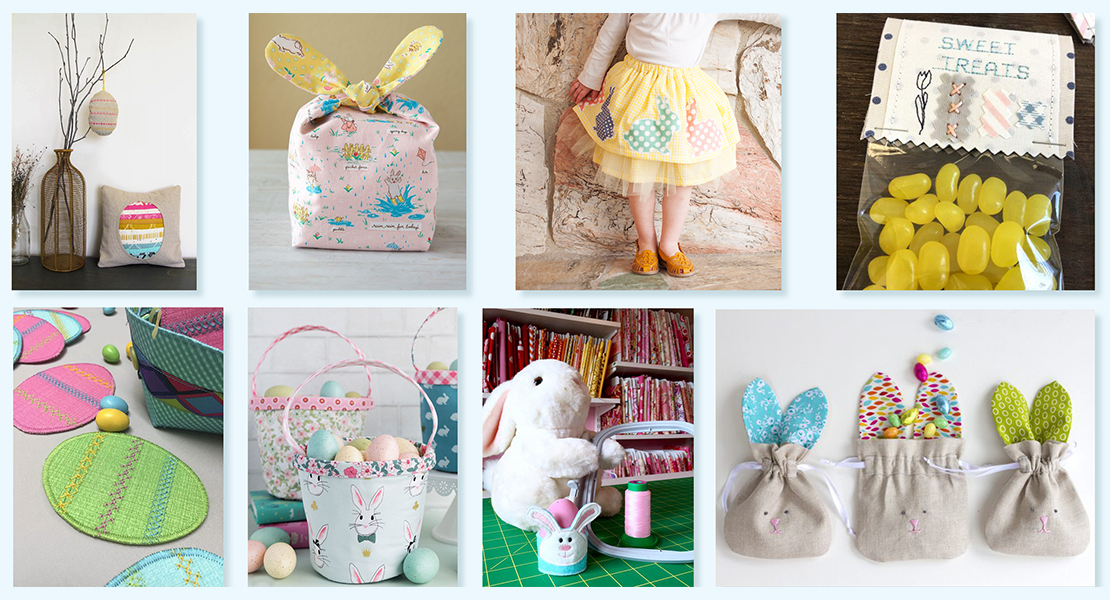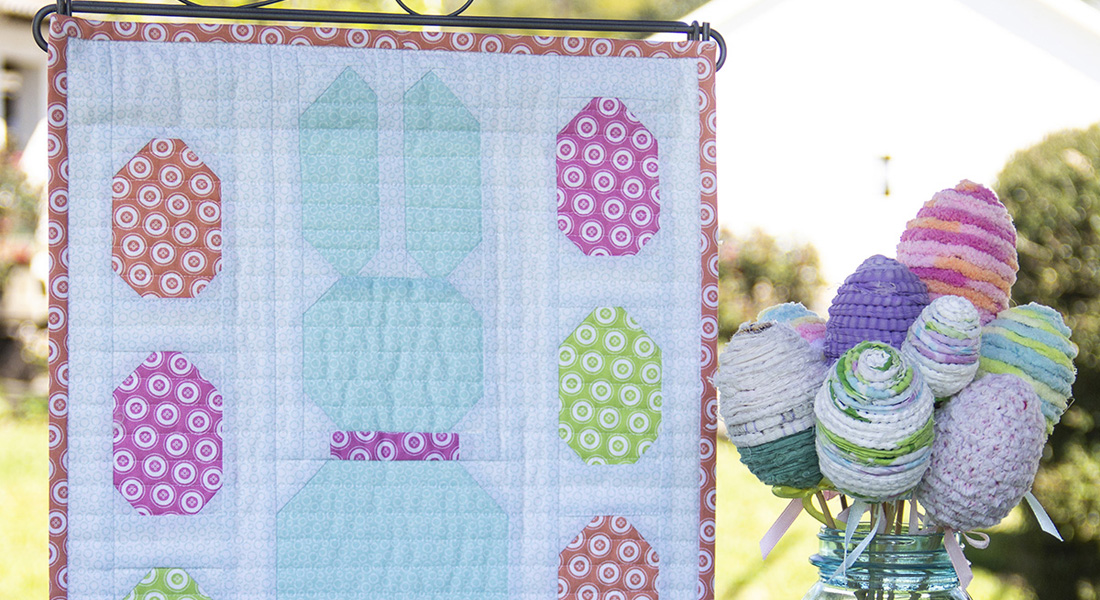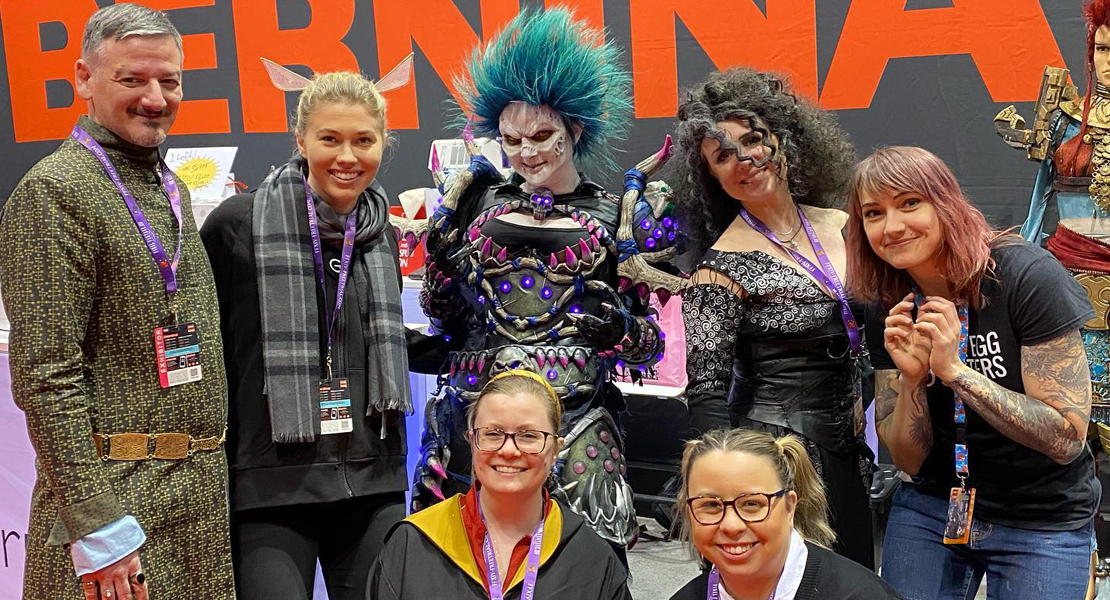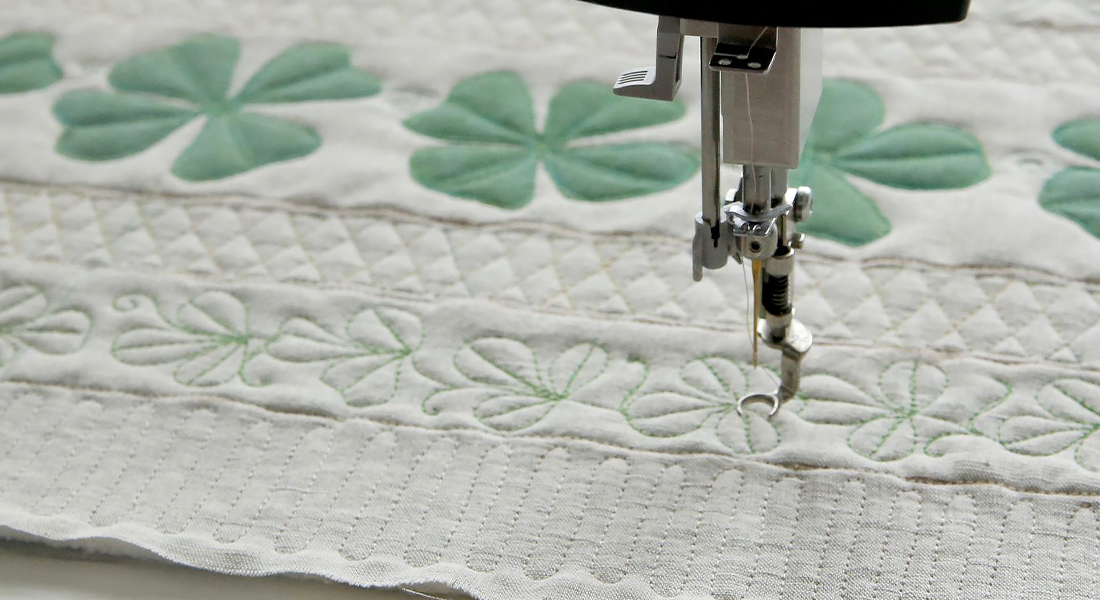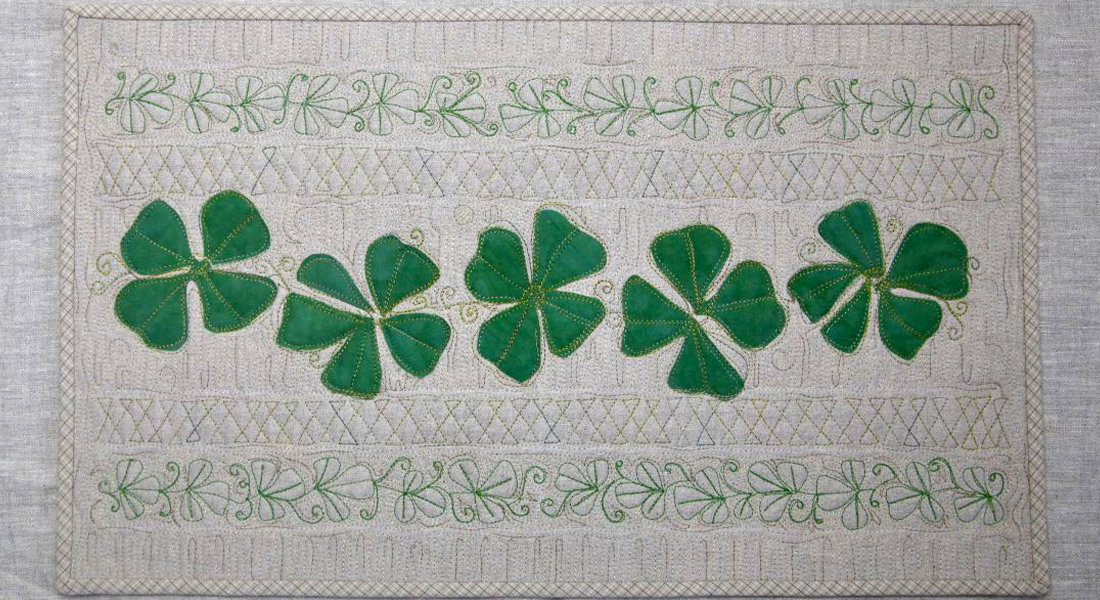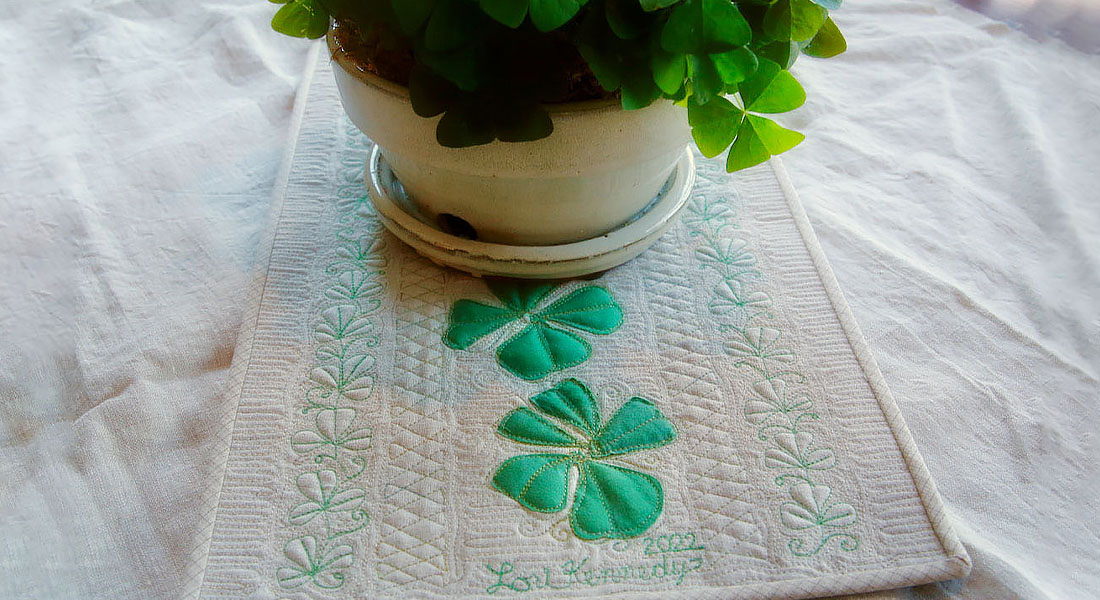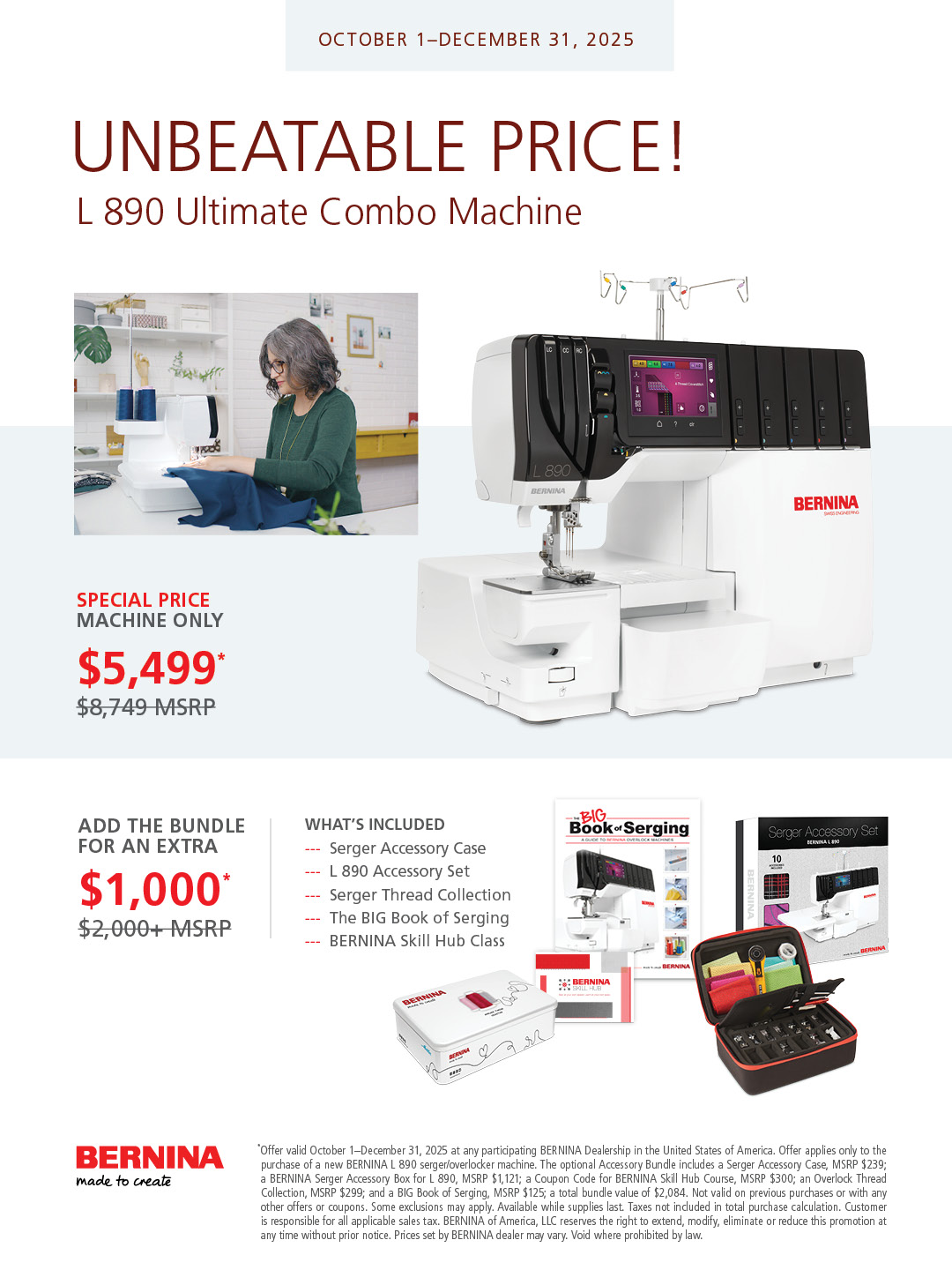Easter Egg Table Runner Sew Along, Part 2: Piecing the Egg Fabric Panels
Welcome to week two of the Easter Egg Table Runner Sew Along! I decided to piece a second table runner with a different colorway that I’ll be using in my examples. I am using a color scheme similar to the bird’s egg colorway posted in week one. It follows the same color distribution as the original.
Notes Before You Begin
We will use a 1/4 inch seam allowance for all piecing. I highly recommend starching your fabric prior to cutting out your units. I generally am a press the seams to the dark side kinda gal, but for this project, it is important that you press almost all of your seams open (the pattern gives instructions to press certain seams to one side for the chevron egg). We are going to be cutting our eggs out of the fabric panels we make, and then turning the edge under using freezer paper applique. It will be much easier to turn open seams under versus bulky side pressed seams. The pattern download has fully illustrated step-by-step instructions, so this blog post will cover some tips and tricks with photo examples that expand upon the pattern. Download the pattern for the egg fabric panels here and let’s start sewing!
Stripe Egg and Diagonal Stripe Egg
These eggs are pretty straightforward. Just remember to press your seams open! I’ve included some wiggle room for all fabric panels so don’t stress too much if your 1/4 inch seam allowance isn’t perfect or the edges of your units don’t match up precisely.
Patchwork Egg
The patchwork egg is strip-pieced and I thought it would be helpful to show you how I use my ruler to cut the strip-pieced units to size.
First, you want to line the edge of your unit up with the 2.5″ line on your ruler as seen above in the picture. Next, make sure the bottom edge of the unit is straight along the horizontal line you are using. Use your rotary cutter to cut the strip and keep going for the other units. Easy as that!
Chevron Egg
This egg is a little different because you don’t end up with a rectangle at the end. Let’s look at how you line up the units once they are ready to go together.
First, you want to find the center of your solid units by folding them in half and pressing the crease. Next, fold your chevron units in half matching the points of the triangles at one end and press that crease. You will use the creases to match the centers and sew the units together.
Spotted Egg
The pattern has details if you are going to use your heavy-duty freezer paper to turn the edges of your circles under. I thought it would be helpful to show you how to use Karen Kay Buckley’s Perfect Circles to turn the edges of your circles as an alternate method. This method works best with mylar templates and not freezer paper (the freezer paper won’t hold the shape enough).
Instructions for Perfect Circles
Step 1. Match Freezer Paper E Template to Similar-sized Perfect Circle
I usually will pull out as many of the same-sized circles as possible so I can make multiple circles at one time. There were four of this particular size, so I was able to make a bunch at once!
Step 2. Trace Outer Edge of Perfect Circle onto Fabric
I traced three circles and will cut out three at a time in the next step to end up with nine circles.
Step 3. Cut Circles Out
Using three layers of fabric, cut circles out approximately 1/4″ away from the original line you drew.
If you are a visual person or aren’t used to eyeballing a 1/4″ you can choose to draw another circle outside the original traced circle. Cut along the outer circle.
Step 4. Basting Stitches
Tie a knot at the end of your thread and sew approximately 1/8″ away from the outer edge around the circle.
You are going to use larger basting stitches, approximately 1/8″ all the way around. I will do multiple stitches at once before pulling the needle through to save time.
Step 5. Bunch Fabric Around Perfect Circle
Center the Perfect Circle on your fabric and pull the loose thread end to bunch the fabric up around the Perfect Circle.
I like to wrap the extra thread around the shape a few times to make sure it is nice and tight. You don’t want the circle to bend, but you want the edges to be snug against the circle.
Step 6. Prep Starching Materials
Spray some of the magic sizing into the cap and let it settle. Turn your mini iron to a low to medium setting (I set my Dritz Petite Press at 2 so it doesn’t warp the Perfect Circle). Let your iron heat up and grab your paintbrush.
Step 7. Paint Outer Edge
Paint the entire outer edge of the wrong side of the circle’s turned edge.
You want it saturated completely. I do the entire thing at once.
Step 8. Press
Press the saturated edges all the way around the circle.
Be patient and let the iron sit for a while on each part. You are using a lower setting so it might take some time for the saturated edges to completely dry. Sometimes I will set my regular iron to a low setting and use my mini iron to initially set the entire circle, then move multiple circles under the regular iron to fully dry. If you get any pointy folds along the circle simply re-starch that section with the magic sizing and press again until the edges are all wrapped neatly around the Perfect Circle.
Step 9. Pull Out Perfect Circle
Once your edges are fully dry you will unwrap the thread that is wrapped around the circle and nudge open the turned edge where the loose thread end is.
You only need to open the turned edge just enough to pull the Perfect Circle out of the fabric.
Step 10. Close Up
Pull your loose thread until the circle closes back up into shape.
Step 11. Set the Shape
Press the edge you opened and pulled shut so that the shape sets.
Your circles are now perfect!
I like to use Roxanne Glue-baste to baste my circles to my egg fabric. I arrange the circles on the egg as I want them, then I turn one over, put a thin line of glue along the turned edge, flip right side up and press to set the circle and glue.
Sewing the Circles to the Egg
Once your circles are basted to the egg make sure you remember to iron some stabilizer onto the back of your egg fabric before you applique the circles (Reynold’s Kitchen Freezer Paper works). You don’t want your fabric scrunching up while you turn it when sewing. I used the Open Embroidery Foot #20C and a blanket stitch with YLI invisible thread to sew my circles. I selected stitch #1309 from the quilting stitches and lower my stitch width and length to 1.5. Play around with your stitch width and length to find something you like! If you don’t have a blanket stitch on your machine a zigzag will work just fine.
I used the Open Embroidery Foot #20C so I could see exactly where my needle was going to hit the fabric. The illustration above shows how you use the blanket stitch around the circle. Manually turn the handwheel for your first stitch to make sure the straight edge of the stitch is hitting just outside the edge of your circle. It should be stitching in the ditch. Next, the teeth part of the stitch will jump over the circle into a little bit of the edge. Ideally, you want to go slowly and keep the straight edge in the ditch between the background fabric and the circle, and the teeth edge should be the part actually sewing your circle down.
Bonus
If you have a digital cutting device (like a Cricut, Silhouette, etc.) at home and would like to use it to cut out your egg and circle templates you can find the SVG file for the egg here and the SVG file for the circle here. Please refer to your machine’s instruction manual for guidance on using SVG files.
Week 2 Wrap-up
Thank you for checking out week 2 of the Easter Egg Sew Along! If you missed week 1 you can find all the prep materials here. If you are on Instagram I’d love for you to share your fabric panel progress with the hashtags #eastereggtablerunner, #WeAllSew and #berninausa. Tag @berninausa and @corinne.sovey so we can follow along with your progress. Next week we will go over cutting out your appliqué eggs, how to appliqué them with a turned edge and assembly of the table runner. Until next time, happy sewing!
